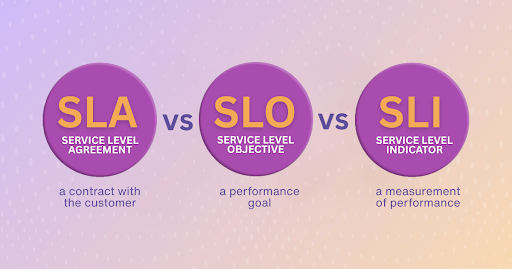

SLA vs. SLO vs. SLI: The Full Breakdown for Reliable Systems
Explore the roles of SLIs, SLOs, and SLAs in site reliability engineering and how they empower your team to plan, prioritize, and perform with confidence.
In this series, Claire Leverne—outdoor rescue expert and engineer—shares insights that SREs can draw from rescue operations. Check out the previous parts of the series for more context:
The most memorable and impactful rescue effort I’ve been a part of was a flash-flood search and recovery.
Earlier that summer, wildfires had been scouring through northern New Mexico and leaving a charred field in its wake. New Mexico has a monsoon season where, for a month-plus, tropical storms blow overhead and drown the landscape.
Heavy rainfall in general can be really dangerous around recent burn areas, because ash and char make the ground water-repellent and facilitate easy flash-flood conditions.
On the afternoon of the event, a typical rain storm blew through the east Pecos mountain range, and one of the canyons accumulated so much instantaneous water that a literal 15-foot wall of water surged down the canyon, taking out the 1st floor of a cabin with its force. Household debris, trees and vehicles were littered for miles downstream, with mounds of wreckage to search through.

This was the first, and only time I’ve worked a recovery mission, and I did not realize how much this experience had affected me until 3 months later when I was spending a weekend in Los Angeles. I went to visit Universal Studios and took the studio tour where we rode in little open-air trolley cars and drove by a bunch of outdoor film sets – including an area designed to simulate flash floods. Very little warning was given for this (part of the tour design, I’m sure), and I was seated in just the right spot to be front and center for the onslaught.
When I saw the rush of water headed my way, I kicked into fight or flight: my heart-rate rocketed and my brain said, “I’m going to die. I am about to die right now.” Just as quickly, the water was diverted away (not soon enough to avoid splashing me, thanks), and I was left mildly confused, wondering what the hell just happened in my psyche.
Anyone in the business of incident response understands the importance of keeping cool.
Dispatchers need to be clear and articulate relaying information. Engineers need to identify impactful tasks and act quickly. EMT’s need to efficiently diagnose and start appropriate treatments.
All of this happens under pressure: they’re operating in an environment full of unknowns and dynamic variables, and time is in short supply.
Training kicks in, protocols are recalled, sometimes a little improvisation is in order – but the common denominator in every response is the need for extreme calm and order.
This is what truly makes emergency professionals stand out: calm under pressure.
However, this calmness is not innate; it’s cultivated through rigorous training and experience. It’s a valuable and rare quality – but these responders are still human.
Being able to keep cool doesn't mean that individuals are not impacted by the stress and enormity of the situation; they’re just able to put their needs on hold, get the job done, and process their emotions at a later date.
That said, the job of processing and personal recovery should never be forgotten or overrun with continued work. It’s a crucial, final step of every incident, that will help every team member stay healthy and prevent burnout.
Sustaining health in high-stress professions requires a dual approach encompassing both proactive preparation and reactive recovery. On-the-job strategies include setting realistic boundaries to prevent fatigue, encouraging regular breaks to avoid burnout, and maintaining a physical environment conducive to both task performance and health.
Post-incident reviews with the team can be a really great way to walk through the event in detail, talk through rationale of each individual’s decision-making process, find some lessons-learned, and gain some hindsight-clarity about the event. Structured debriefings allow team members to discuss what transpired, sharing both accomplishments and challenges faced. These sessions validate individual experiences, fostering a sense of camaraderie and shared understanding.
Part of a good recovery happens on the job, and part of it happens off the job; one of the best things an employer can do is facilitate work-life balance, so responders can rest and seek connection with the communities that support them. It’s also important to make sure workers are aware of what opportunities are available for their own health or recovery. Search and rescue has a support number that can be called to talk through the personal impacts and trauma of an event. Many companies have counseling services.
Acknowledging the human element behind the professionals is not simply about compassion—it's about sustaining performance and maximizing the capability of individuals to excel even in crises. By fostering environments that prioritize mental well-being alongside technical excellence, organizations can ensure that their teams are not only prepared to face unexpected challenges with calm and competence but are also equipped to recover, learn, and grow beyond each incident. The path to resilience is paved with deliberate care for mental health, recognizing and nurturing the unique strengths of each team member to face the challenges of future operations with confidence and preparedness.
Practical advice for adventurers: it’s pretty common to be out on a backpacking, skiing or climbing adventure, and to have something – at least a little – sketch go down. We’re in the “wild,” afterall. Make sure to take the time to revisit these experiences with your friends, when you’re off the trail and enjoying a pint together. Ask if it was preventable, and process what it was like for each person. These kinds of experiences are great learning opportunities, but they also bring together tighter-knit friendships when given some air-time.
Stay safe, and remember to pack snacks!